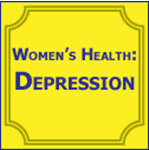You have no items in your shopping cart.
eBooklets with Test
Stimulants: Caffeine, Amphetamines, etc. - Ebooklet
Identifies the physiologic, pharmacologic, and psychoneurologic properties of stimulants. Outlines the issues of caffeine toxicity, caffeine withdrawal, and management of caffeine-related disorders. Describes the mechanisms involved in amphetamine addiction and approaches to management of this condition. Identifies stimulants and stimulant-like medications used in weight reduction and appetite suppression.
$25.00
Stop Losing Sleep - Ebooklet
Outlines the classification and diagnosis of sleep disorders, including various insomnias and circadian rhythm anomalies, restless legs syndrome (RLS), and periodic limb movement disorder (PLMD). Identifies other conditions that may contribute to sleep disorders, including neurological, endocrinological, and psychological disorders. Describes the approaches to management of sleep disorders, both pharmacological and nonpharmacological (e.g., dietary, hygienic, and psychosocial). Identifies clinical ramifications of sleep apnea and RLS/PLMD pertinent to dental practice and general clinical practice.
$25.00
The Mediterranean Diet - Ebooklet
Identifies the countries included in the Mediterranean region and discusses their traditional way of life. Describes the food-based guidelines that make up the Mediterranean pyramid. Explains the significance of physical activity, diet, and social interaction as part of the Mediterranean way of life. Discusses the research that supports the health benefits of the Mediterranean Diet with respect to heart disease, diabetes, obesity, cognitive function, cancer, and other chronic diseases. Describes how the Western diet and lifestyle can be modified to comply with Mediterranean lifestyle recommendations.
$25.00
Understanding Cholesterol - Ebooklet
Lists the various lipid components of total cholesterol and describes how they are formed in the body. Describes the physiological function of each lipid faction. Discusses how abnormal lipid levels may contribute to cardiovascular disease. Describes the lipid profile test and explains what values are considered desirable. Explains how lifestyle factors such as diet and inactivity can contribute to lipid abnormalities and treatment options. Describes the various categories of drugs used to treat lipid abnormalities. Describes some effective, realistic, and easily implemented strategies to improve patient adherence.
$25.00
Vitamin D: Vitamin, Hormone, & Protector - Ebooklet
Discusses the historical incidents that led to the discovery of vitamin D. Recognizes the synthesis and function of various forms of inactive and active vitamin D. Describes the role that vitamin D may play in the physiological function of various systems. Lists the current guidelines for supplementation of vitamin D. Lists the blood levels that define the various categories of vitamin D deficiency and sufficiency. Identifies the best food sources of vitamin D.
$25.00
Women's Health: Chronic Pain - Ebooklet
Describes the difference between chronic and acute pain. Identifies the symptoms of and treatments for chronic pain conditions affecting women. Discusses the role of home remedies, relaxation techniques, and other non-drug therapies for treating chronic pain. Explains the psychosocial aspects of treating chronic pain. Describes how to manage use of pain medications, including opioids, to ensure patient safety.
$25.00
Women's Health: Depression - Ebooklet
Identifies the most prevalent forms of depression. Identifies the symptoms of depression and mania. Identifies the differences in presentation across age groups and sexes. Compares the theories of depression. Reviews depression treatment modalities.
$25.00
Women's Health: Insomnia - Ebooklet
Discusses the physiology of sleep. Describes healthy sleep patterns. Identifies the different types of insomnia. Discusses women’s sleep problems across their life cycle. Identify treatments for insomnia including optimal sleep hygiene, behavioral methods, and pharmaceuticals.
$25.00








